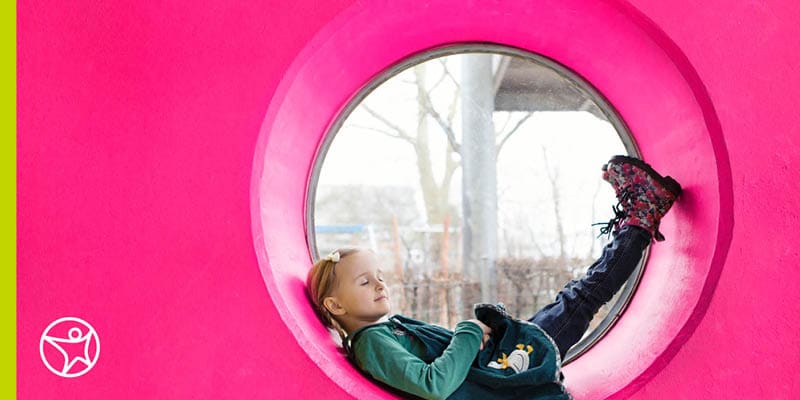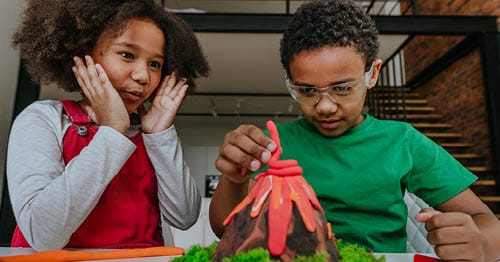8 Creative-Thinking Activities for Kids to Build Critical-Thinking Skills
byAlyssa Austin
4 min to read
Building critical-thinking and problem-solving skills is essential to learning. Fostering your student’s creativity is just as important, and it can even help develop their analytical skills.
To make learning fun and help your student grow as a unique individual, encourage creativity whenever possible. Below are some creativity tools your student can try, as well as some tips for helping them be more creative.
What Is Creative Thinking and Why is It Important?
Simply put, creative thinking is the ability to come up with unique and original solutions to problems. The popular job searching resource Indeed.com defines creative thinking as “the process of considering situations from innovative perspectives and developing an open-minded mindset.”Creative thinking is a crucial skill to develop in the workplace—and in life.
Creative thinking allows us to come up with new ideas, overcome challenges, and expand our understanding of the world around us.
It is especially important for kids to work on developing their creative-thinking skills, and creative-thinking activities for kids can be a great way to foster this development.
What Do Creative-Thinking Skills Look Like?
Creative thinking can be applied in many ways, but here are some common ways that creative-thinking skills manifest:
- Brainstorming
- Problem-solving
- Visual thinking
- Lateral thinking
- Storytelling
- Data analysis
- Challenging norms

Activities to Build Creative-Thinking Skills for Kids
Incorporating creative-thinking activities for kids is a helpful way to aid the development of this useful skillset. Here are some of our favorite creative-thinking activities for elementary students, middle school students, and high school students.
1. Encourage asking “what if?”
A simple but effective critical-thinking exercise for kids is the ongoing practice of asking “what if?” This is a great way for students to go deeper into their daily curiosities and to foster a consistent outlook of creativity.
2. Start with simplicity.
In a recent study conducted in Australia, researchers found that children were more active during recess when they had access to objects such as hay bales, buckets, and exercise mats than when they were at conventional playgrounds with slides and other equipment.
3. Remove limits.
Students who have to adhere to a lot of rules are more likely to conform, or act like everyone else, than be themselves. Give your student flexibility so they learn to take risks and be different.
4. Embrace messes.
It’s difficult to experiment when you have to worry about keeping things clean. There’s a time for being neat, but there are also times when it’s okay to encourage your student to be messy
5. Daydream.
Daydreaming is one of the simplest but most effective creative-thinking activities for kids. Letting the mind take a break from constant activity is essential for processing ideas and emotions. Many kids are overscheduled during the day and don’t have enough time to simply imagine. Too much stimulation is just as bad as too much inactivity, so give your student time to think, relax, and be bored.
6. Spend time alone.
Alone, students can explore new interests and test ideas without worrying about what anyone else thinks. It’s crucial to growing as a unique individual.
7. Practice.
Creativity can’t be forced, but it does benefit from encouragement. As Jane Porter discusses in her article “How to Cultivate a Creative Thinking Habit,” creativity isn’t a mysterious quality that spontaneously appears. Students need to practice creativity often to make it a part of their lives.
8. Incorporate online tools that encourage creativity.
While it’s true that most creative-thinking activities for kids can and should be done away from any sort of phone or computer screen, online creativity tools can certainly be helpful in building creative thinking as well.
Online Creativity Tools for Kids
PicMonkey. This photo editing and graphic design tool is a good choice for older students, allowing them to create images and experiment with basic graphic design.
Piktochart. With an account, students can use Piktochart to display data in infographics or tell a story using images.
Wideo. Create, edit, and share animated videos with this unique platform.
Storybird. This platform shares images from illustrators and animators so children and adults can use them to create their own stories.
Tessellation Creator. A visual tool for grades 3 through 8, the tessellation creator exercises geometry skills by showing students how to create repeating patterns of polygons.
Story Starters Adventure by Scholastic. This interactive tool randomly generates a story idea when students spin the wheel.
Puzzlemaker by Discovery Education. Students can create their own word searches, crosswords, mazes, and more.
With the help of these creative-thinking activities for elementary students and beyond, you’ll be able to help your child develop this crucial life skill. Visit Connections Academy® to learn more about our options for online education!
